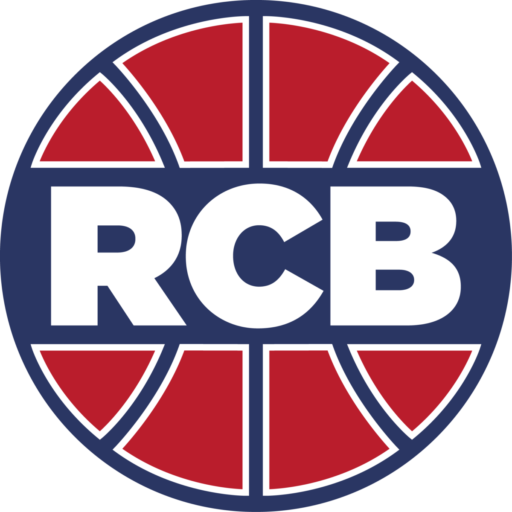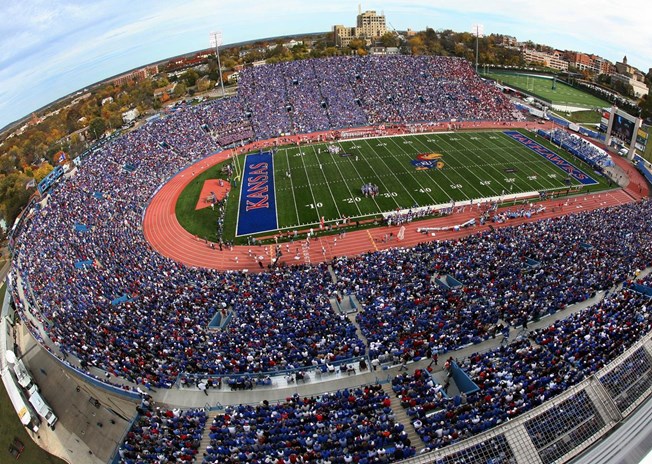A Tale of Two Halves: What Sunk the 2014-15 Jayhawks?
Under head coach Bill Self, the Kansas Jayhawks have been a model of consistency, winning the Big 12 conference the past eleven seasons and never being seeded lower than fourth in the NCAA tournament. However, the 2014-2015 campaign was a glaring exception. Though the Jayhawks won the Big 12 for the eleventh consecutive season, there was a glaring element of inconsistency to the Jayhawks play for the entire season.
As in most seasons, media and fans hyped this year’s edition of the Jayhawks. Even though KU lost two top-five draft choices, Andrew Wiggins and Joel Embiid, and a key contributor in Tarik Black, most thought the Jayhawks reloaded. Incoming freshmen Cliff Alexander and Kelly Oubre were to fill Embiid and Wiggins’s shoes. Returning contributors Frank Mason III, Wayne Selden Jr., and Perry Ellis were expected to pick up some of the lost production.
After a 32-point thrashing at the hands of #1 Kentucky, KU made significant progress in the Orlando Classic, defeating Tennessee and Michigan State. The season was looking promising for the Jayhawks when the calendar changed to December. Kansas’s third opponent from the SEC, Florida, came to Allen Fieldhouse as a part of the Big 12-SEC Challenge. The Gators jumped out to a 15-point halftime lead before the Jayhawks used a 17-0 run in the second half to defeat the Gators by six points.
In the Jayhawks’ annual game at the Sprint Center in Kansas City, they played the Utah Utes, an underrated team from the Pac-12. KU surged ahead by 18 points at halftime, only to blow the lead and eek out a three point victory late in the game. After the hard-fought win, Bill Self’s team travelled to Philadelphia to play the Temple Owls. In maybe the worst performance of the season, the Jayhawks shot 32% from the field en route to a 25-point blowout loss. The story remained the same in conference play. Against Oklahoma, Kansas played the first twenty minutes to a 19-point lead at half. But sticking with their pattern, KU allowed the Sooners to storm back to take a second-half lead before KU retook control late in the game. The Jayhawks’ struggle with consistency was not limited to the friendly confines of Allen Fieldhouse. KU was playing well in Stillwater against the Oklahoma State Cowboys, maintaining an 11-point lead at half. Travis Ford’s Cowboys stormed back in the second half, outscoring the Jayhawks by 16 in the last 20 minutes.
On occasion, the Jayhawks would come back from a large deficit instead of blowing a lead. On Senior Night against the West Virginia Mountaineers, Bob Huggins’ team jumped out to a 40-22 lead before halftime. The Mountaineers were even up eight with under two minutes to go, before missing key free throws and turning over the basketball, allowing the Jayhawks to force overtime before ultimately winning by seven. However, this pattern of Jayhawk comebacks did not last long. In the Big 12 tournament title game, the Jayhawks met familiar foe Iowa State. The Jayhawks were up by 14 at half, before Iowa State, behind a streaking offense, took the lead with seven minutes to go. KU tied the game with a minute remaining, but the Jayhawks fell short, losing 70-66.
What was behind the maddening inconsistency of the 2014-15 Jayhawks? There are several possible explanations.
First and most obviously was the youth of the Jayhawks. According to sports statistics service StatSheet.com, the Jayhawks were the 15th-youngest team in Division-I college basketball in 2014-15. Kentucky was the only team younger than KU that made the NCAA Tournament. Kansas was made up of four freshmen, four sophomores, three juniors, and zero scholarship seniors. It was a huge challenge for Self and his staff to get these inexperienced players to mesh consistently as a team. Even though the Jayhawks finished the season 27-9, they were never the cohesive, well-oiled unit we are used to seeing from a Bill Self team.
Another possible explanation was the combination of player turnover and players having to take on new and unfamiliar roles. Starting with Conner Frankamp’s transfer in November, the Jayhawks struggled to find consistency within the rotation. Their problems worsened when Devonte Graham suffered a toe injury against Georgetown. A young team forced to take on new roles is bound to have some inconsistency as they find how to execute their role in Bill Self’s style. For example, guard Frank Mason III was forced to play at the point guard position for at least 35 minutes per game in Graham’s absence. Before Graham’s injury, Self would play Graham and Mason together on the floor, with Graham playing point in their smaller lineup. After, Mason took on a dual role as scorer and distributor.
As fans saw through the entirety of the season, the Kansas Jayhawks were talented, but exasperatingly inconsistent. Game to game, half to half, and even possession to possession, fans and coaches did not know which version of the Jayhawks would show up; either the team that lost to Kentucky by 32 or the team that jumped out to a 19-point lead against Oklahoma. There were many possible reasons for the inconsistency, but it is impossible to guarantee which explains this year’s disappointing tale of two halves. Perhaps a more experienced team in the 2015-2016 season will be more consistent.






Thanks so much for your hard work. I love sucking dick btw hmu
ivermectin 3mg tablets price http://stromectolfive.com/# stromectol cvs
Appreciate the useful information I love sucking dick btw hmu
This information is so great thanks! I love sucking dick btw hmu
Thx so much ! Appreciate the useful info.
Thank you for sharing the info. I love sucking dick btw hmu https://bit.ly/3n3p0qv
Thank you the information.
How can I get more useful info?
I am 44 year old female Thank you so much!
I just saved your site.
Interested in more info. How can I reach you?